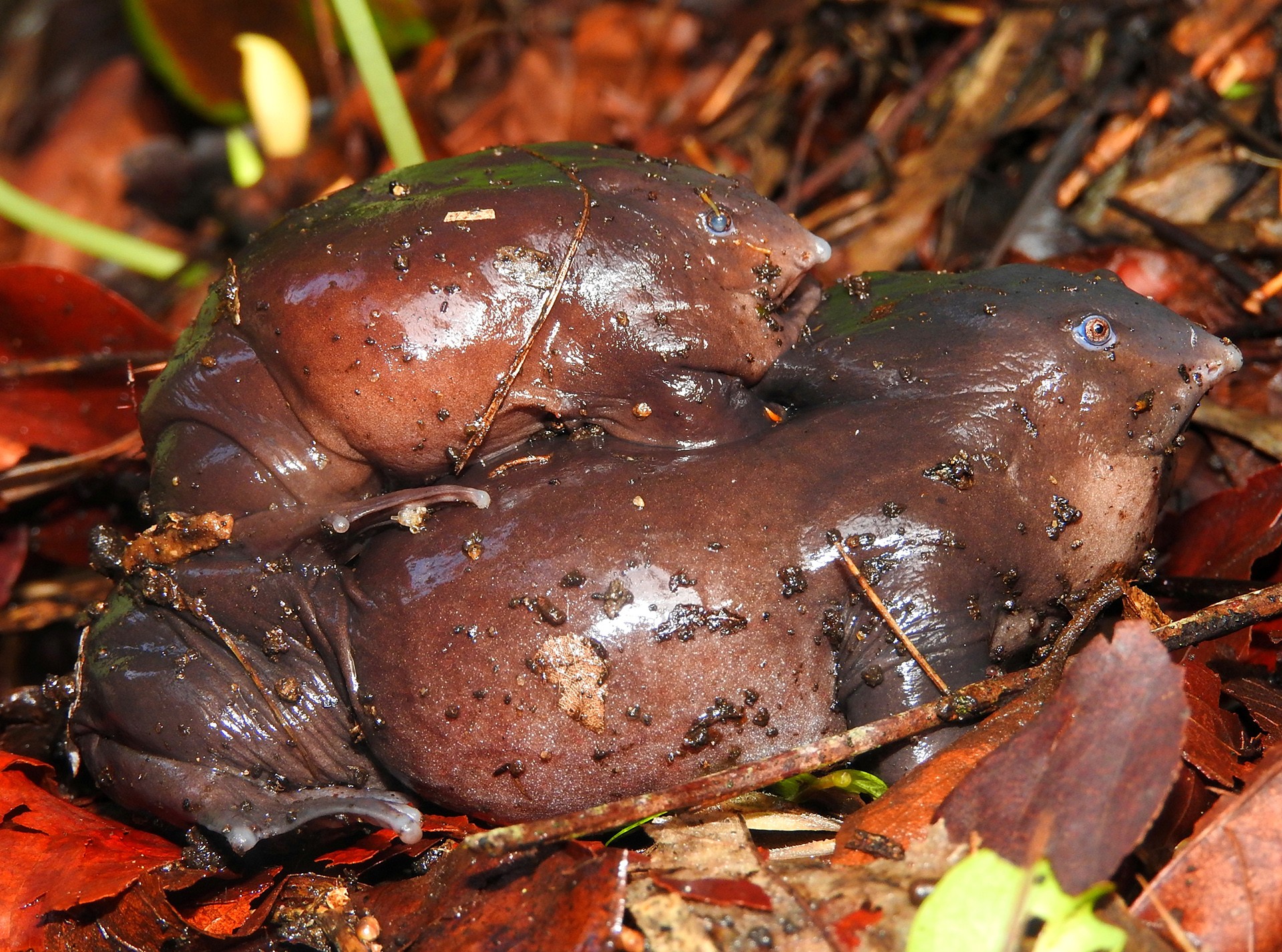Our first Fortnight Focus challenge of February – In Danger – has curated a stunning set of images, showcasing species that are filed as at least Near-Threatened under the IUCN Red List of Threatened Species. There are some real surprises in here, furthermore reason for concern to say the least.
Scroll down to find out the species that are 'in danger'.
The winner takes home a Shutterbug Pro camera bag from Wildcraft and exclusive goodies from NiF.
A big shout-out to everyone who contributed, and a definitive invitation to those who haven't yet to join in for the next.
Manju Acharya
Asiatic Wild Dog (Cuon alpinus) | Endangered
This picture of a mating pair of Dholes in the Nagarahole Tiger Reserve is a welcome sight, considering their decreasing numbers. Dhole numbers are stable in large protected areas in southern and central India where prey densities are high, but regions like northeastern India have seen a decline in numbers due to prey depletion.
Samiran Halder
Bengal Tiger (Panthera tigris tigris) | Endangered
A subadult tigress from the Bandhavgarh National Park in Madhya Pradesh. Large-scale habitat destruction and decimation of prey populations are the two major threats for these big cats. Today, tigers just occupy 7% of their historic range and the current population in the country is estimated to be around 1706 individuals.
Mainak Ray
Asian Elephant (Elephas maximus indicus) | Endangered
A train of elephants navigates a water channel in the Kaziranga National Park. These ‘mega-herbivores’ require vast tracts of forests to survive, which inherently puts them in conflict with the expanding human population.
Manish Manick
Indian Rhinoceros (Rhinoceros unicornis) | Vulnerable
This solitary shot of an Indian Rhinoceros against the vast backdrop of Kaziranga, perfectly symbolises the plight of this incredible species. But with strict protection from the Indian and Nepalese wildlife authorities, it has recovered from a total population of 200 in the early 1900s to around 2,500 today.
Kushankur Bhattacharyya
Himalayan Musk Deer (Moschus leucogaster) | Endangered
A Himalayan Musk Deer foraging in the dusk in the Pangolakha Wildlife Sanctuary in Sikkim. The primary reason for their decreasing population is illegal hunting for musk collection and habitat fragmentation.
Shubhankar Dey
Barasingha (Rucervus duvaucelii) | Vulnerable
A Barasingha is pictured feeding with a myna on its back at the Kanha National Park in Madhya Pradesh. The present distribution of the Barasingha is much reduced and fragmented, owing to hunting and habitat loss.
Vedansh Pandey
Nilgiri Langur (Semnopithecus johnii) | Vulnerable
The Nilgiri Langur is an attractive black Colobine monkey found in the Western Ghats. Poaching is the major threat for these langurs, with their pelt, organs and flesh used to produce crude medicines and aphrodisiacs.
Arpan Saha
Western Hoolock Gibbon (Hoolock hoolock) | Endangered
A Western Hoolock Gibbon family is pictured in the forests of Tripura; on the left is the male and to the right is the female ape with the baby. Populations of these gibbons have declined by almost 90% over the last 30 years.
Hira Punjabi
Bornean Orangutan (Pongo pygmaeus) | Critically Endangered
An orangutan mother and baby are pictured in the forests of Borneo in Indonesia. Owing to the rapidly disappearing forests in Indonesia and Malaysia, the future of this large tree-climbing mammal is in great peril.
Ganesh Mandavkar
Gharial (Gavialis gangeticus) | Critically Endangered
Native to the northern part of the Indian subcontinent, this unmistakable crocodile with its long, toothy rostrum is sadly on the very brink of extinction. This image was made at the Chambal River in Dholpur, Rajasthan.
Priyam Chattopadhyay
Irrawaddy Dolphin (Orcaella brevirostris) | Critically Endangered
The Chilika Lake is the single largest habitat of Irrawaddy River Dolphins in the world. As many as 155 of them were spotted during a fresh monitoring survey of this lagoon. But the now-famous dolphin tourism spot has now introduced motor boats into the picture which often threaten the lives of these river dolphins.
Nihal Jabin
Purple Frog (Nasikabatrachus sahyadrensis) | Endangered
The Purple Frog is a rare species of frog that can only be found in the Western Ghats. Threatened by deforestation from expanding cultivation, its specialised breeding biology also makes it extremely vulnerable to habitat loss and change.
Surya Narayanan
Indian Black Microhylid Frog (Melanobatrachus indicus) | Endangered
Endemic to the Western Ghats and with colours like black, blue and orange, the Indian Black Microhylid Frog is an extremely rare species that was only recently rediscovered. The population is fragmented and is presumed to be declining.
Alok Katkar
Indian Vulture (Gyps indicus) | Critically Endangered
This picture of Indian Vulture was shot at Bandhavgarh National Park in Madhya Pradesh. The severe decline in their population due to diclofenac poisoning sees this avian species listed as Critically Endangered under the IUCN Red List of Threatened Species.
Rajdeep Mitra
Steppe Eagle (Aquila nipalensis) | Endangered
A mighty Steppe Eagle sits on top of a pile of carcasses at Jorbeer, Bikaner. This endangered avain species is constantly declining in number owing to habitat destruction, persecution, and collisions with power lines.
Tarunjyoti Tewari
Greater Adjutant (Leptoptilos dubius) | Endangered
The once-common Greater Adjutant can now most often be seen at a large garbage dump near the Guwahati airport. It is estimated that there are just under 1,200 mature individuals in the wild today, with 600 - 850 individuals in the state of Assam.
Bhasmang Mehta
Sociable Lapwing (Vanellus gregarius) | Critically Endangered
One of the most threatened birds to live on the Eurasian steppes, the Social Lapwing is also one of the most sought after winter migrants in the country. Hunting pressure along migration routes and wintering grounds are seen as the reason for the decline of this species.
Sambath Subbaiah
Great Indian Bustard (Ardeotis nigriceps) | Critically Endangered
The extinction of this magnificent species seems almost inevitable now, but there is still hope, little rays of sunshine, like this pair of Great Indian Bustards from the Desert National Park in Rajasthan.


















